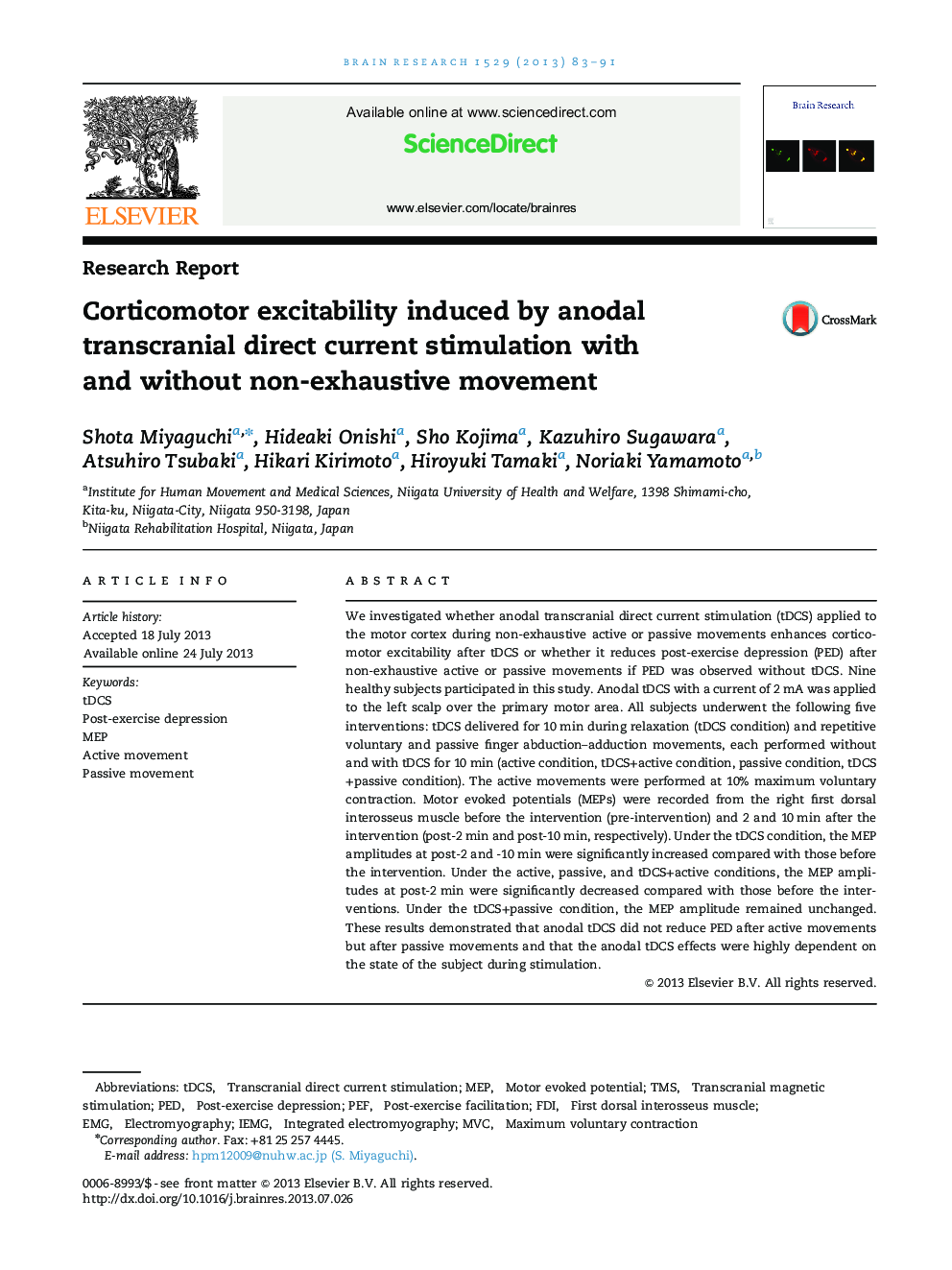| کد مقاله | کد نشریه | سال انتشار | مقاله انگلیسی | نسخه تمام متن |
|---|---|---|---|---|
| 6263767 | 1613910 | 2013 | 9 صفحه PDF | دانلود رایگان |
- Nonexhaustive active and passive movements decrease corticomotor excitability.
- Anodal tDCS applied during nonexhaustive active movement did not reduce PED.
- Anodal tDCS applied during passive movement reduced the decline in MEP amplitude.
- Nonexhaustive active and passive movements interfere with the tDCS effect.
We investigated whether anodal transcranial direct current stimulation (tDCS) applied to the motor cortex during non-exhaustive active or passive movements enhances corticomotor excitability after tDCS or whether it reduces post-exercise depression (PED) after non-exhaustive active or passive movements if PED was observed without tDCS. Nine healthy subjects participated in this study. Anodal tDCS with a current of 2Â mA was applied to the left scalp over the primary motor area. All subjects underwent the following five interventions: tDCS delivered for 10Â min during relaxation (tDCS condition) and repetitive voluntary and passive finger abduction-adduction movements, each performed without and with tDCS for 10Â min (active condition, tDCS+active condition, passive condition, tDCS+passive condition). The active movements were performed at 10% maximum voluntary contraction. Motor evoked potentials (MEPs) were recorded from the right first dorsal interosseus muscle before the intervention (pre-intervention) and 2 and 10Â min after the intervention (post-2Â min and post-10Â min, respectively). Under the tDCS condition, the MEP amplitudes at post-2 and -10Â min were significantly increased compared with those before the intervention. Under the active, passive, and tDCS+active conditions, the MEP amplitudes at post-2Â min were significantly decreased compared with those before the interventions. Under the tDCS+passive condition, the MEP amplitude remained unchanged. These results demonstrated that anodal tDCS did not reduce PED after active movements but after passive movements and that the anodal tDCS effects were highly dependent on the state of the subject during stimulation.
Journal: Brain Research - Volume 1529, 5 September 2013, Pages 83-91
